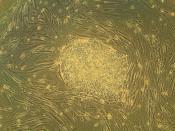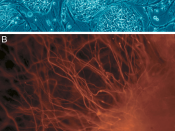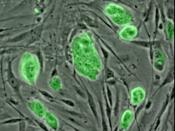Does the thought of sickle cell, diabetes, or Parkinson's disease scare you? There have been numerous scientific and medical discoveries over the years. Extraordinary discoveries such as the polio vaccine or penicillin have prevented epidemics such as small pox and polio. Yet, as advanced, as we are today, the cures for these diseases are still elusive. Lately, no scientific discoveries have been more astounding than stem cell research. However, the research poses ethical issues because of its killing of the embryos to extract stem cells. Needless to say, the research community and activist groups have argued strenuously over the issue, while patients with these diseases are still suffering due to the lack of stem cell research that could potentially cures most diseases. A solution and an alternative to this problem are adult stem cells, which reside in the bone marrow but are also found circulating in blood (Perry 92). Adult stem cells should replace the embryonic ones because they can be readily available, behave in the same manner, and have better potential in treating diseases.
Harvesting and storing embryos are an intricate and certainly expensive part of embryonic stem cell research. Most embryos are harvested at fertility clinics in the form of embryos created in vitro and not selected for implantation (Brainard 32). Other embryos are harvested from abortion activities. For the most part, embryos younger than fourteen days are the most preferred for stem cell research, making fertility clinics the most important source of embryos (32). While millions of dollars are already invested in creating the embryos, it would take millions more to store the embryos for future research. In contrast, adult stem cells are less complicated and expensive to obtain because it utilizes small samples of adult tissues to obtain an initial culture of a patient's own cells...


